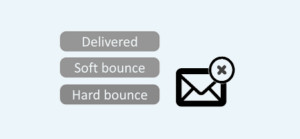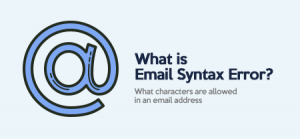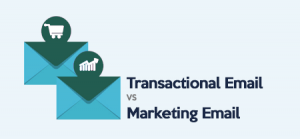In a time when everybody’s talking about hyper-segmentation and personalized promo messages, cold emailing may seem a bit outdated and obsolete.
But it really isn’t.
A well-prepared cold email can still earn you tons of new leads, particularly if you understand and apply the latest principles of this marketing mechanism. The best thing about it is that cold emails are not really that different from other email marketing formats, so you’ll only need to adjust slightly to launch a standout campaign.
We can show you how to do it most effectively, so keep reading to learn eight steps to cold emailing everyone!
Cold Emails: Key Facts and Stats
A lot of marketers are not exactly familiar with the concept of cold emailing, so let’s begin by explaining it a bit more comprehensively.
A cold email is an unsolicited message that is sent to a receiver without prior contact. In other words, you sent it without obtaining approval from the recipient. The tactic is beneficial because:
- It guarantees to raise awareness since you can send a cold email to thousands of users
- It ends up in a place where consumers spend a lot of time, i.e. in the inboxes
- It waits in the inbox until a recipient sees it
- It is easy to scale your campaigns
Cold emailing is obviously great for everyone, from proofreading and assignment help companies to eCommerce stores and B2B agencies, but industry reports prove there is room for improvement. According to the study, the average cold email open rate across all industries stands at 22%. At the same time, the average cold email campaign sees a 1% response rate.
What can you do to make your cold email campaigns better? Let’s check it out in the following chapter!
8 Ways to Create a Standout Cold Email Campaign
How you design a cold email campaign depends mainly on your business, voice, and earlier efforts, but we can give you a few tips to help you maximize the results. Here are the eight most important steps you should take:
Choose the right time to send a cold email
Do you know that perfect timing can drastically increase the success odds of your cold email? The reason is simple – you want to approach potential customers when they are active online. Most people check emails early in the morning, but you should consider your target audience's preferences before sending a message. Cold email software can help with this step by allowing you to schedule your campaigns in advance.
Think about the “from” line
This is the first time you address a given user, so think carefully about the name in the “from” line. Our tip is to go for the full name plus the brand name for two reasons:
- It makes the message look a bit more personalized
- It instantly reveals that you are sending a business message
In reality, such an approach looks like this: Catherine Jones at ABC.
Write a compelling subject line
There are two styles when it comes to writing a subject line, but each one follows the same rule – keep it short and appealing. A subject line should never exceed 50 characters because it must be visible on all devices and email platforms. As for the styles, you can do the following:
- Write a straightforward subject line that instantly reveals the purpose of the message
- Write a catchy subject line using humor or other copywriting tricks to evoke curiosity
Each style has its pros and cons, so make sure to pick the one that matches the tone of your brand.
Write a clear message
Once the recipient starts reading your message, you should make it worthwhile. Write a clear message that’s easy to understand and act upon.
It all begins with the introduction, so don’t hesitate to create an introduction that inspires the audience to keep reading. After that, it all comes down to a few key principles of copywriting:
- Use short paragraphs and divide portions of the text with whitespaces
- Use actionable sentences to make the content more dynamic and interesting
- Highlight keywords that you want to be remembered
Provide value
Every cold email campaign aims to sell a product or service, but that doesn’t give you the right to focus on the brand itself. On the contrary, the goal is to provide value and explain the benefits a recipient can expect from your company.
Add one CTA only
Users who read your col email must be allowed to react, so your job is to design a standout call to action (CTA). You can place it on multiple positions within the same message but do not add more than one CTA option. A cold email should have only one objective and the corresponding CTA, so avoid confusing people by giving them more than one way to take action.
Create a trustworthy signature
The end of the message is reserved for your signature, and this is yet another detail that could make or break your professional authority. Here are the ways to make it look trustworthy:
- Design it properly and make it visually consistent
- Add relevant information only, but don’t hide vital details about you and your company
- Include icons leading to your social media accounts
Remember to follow up
Even the finest cold emails sometimes end up without a reply, but that shouldn’t discourage you. On the contrary, it is fundamental to send a follow-up message because some users didn’t have enough time or forgot to answer.
Most marketers suggest sending up to three follow-ups, but we encourage you to add something fresh and new to each message. That way, recipients will see that you offer real value and eventually engage.
The Bottom Line
Although it is often neglected, cold emailing still makes a precious marketing mechanism for brands eager to expand their reach and improve visibility. In this post, we showed you a brief eight-step guide on preparing a cold email campaign. Are you ready to give it a try?






